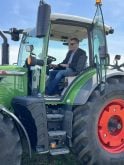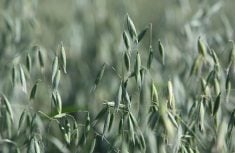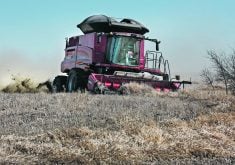Residue management
Harvest is the best time to manage crop residue for direct seeders.
“A common mistake first time direct seeders make is they fail to properly manage their crop res-idue,” says Ken Sapsford, of the Saskatchewan Soil Conservation Association.
Research has shown crop residue provides an overall benefit to direct seeding systems by trapping snow, reducing erosion, improving soil tilth, enhancing water infiltration, developing a microclimate to protect emerging seedlings and weed suppression between rows.
Sapsford said poorly managed residues create problems like plugging and hair pinning during seeding, poor and uneven emergence and wet soils next to dry soils.
Read Also

VIDEO: Ag in Motion documentary launches second season
The second season of the the Western Producer’s documentary series about Ag in Motion launched Oct. 8.
Crop type affects the residue management required for direct seeding. Straw from most cereal crops should be spread at least 70-80 percent of the width of cut. Crops such as canola and mustard, which produce little straw, do produce large amounts of chaff. This chaff, if left in a concentrated row, can cause problems with seedling growth and development in next year’s crop. Chaff should be spread 40-50 percent of the width of cut.
Straw choppers and chaff spreaders are the major components of a good residue management system. Some manufacturers are equipping new combines with chaff spreaders and straw chopping and spreading equipment that will spread over wider swaths.
Most original equipment choppers and spreaders will not do an adequate job of spreading over six metres, Sapsford said. Specialized straw and chaff spreading equipment is required to spread over widths of cut greater than 7.7 m (25 ft).
Collecting chaff for livestock feed also eliminates the chaff problem for direct seeders, as well as collecting weed seeds.
If the residue is not properly spread with the combine, post-harvest residue management will be necessary. Harrowing can be an effective method of spreading straw. Harrowing, however, will not spread chaff.
Excessive stubble height can create problems in direct seeding, especially with hoe-and-shank-type seeding equipment. The rule of thumb for residue clearance is the stubble height should not exceed the row spacing on the seeding implement.
With disc-type seeding implements, tall standing stubble reduces seeding problems since there is less residue on the surface to cause hair pinning.
Sapsford said if you want to leave tall stubble and you seed with a hoe type seeder you will probably have to use a stubble cutter before seeding.
– Sask. Soil Conservation Association














